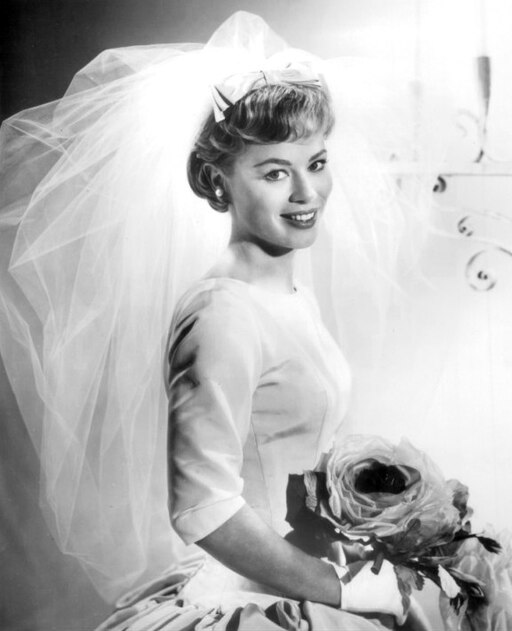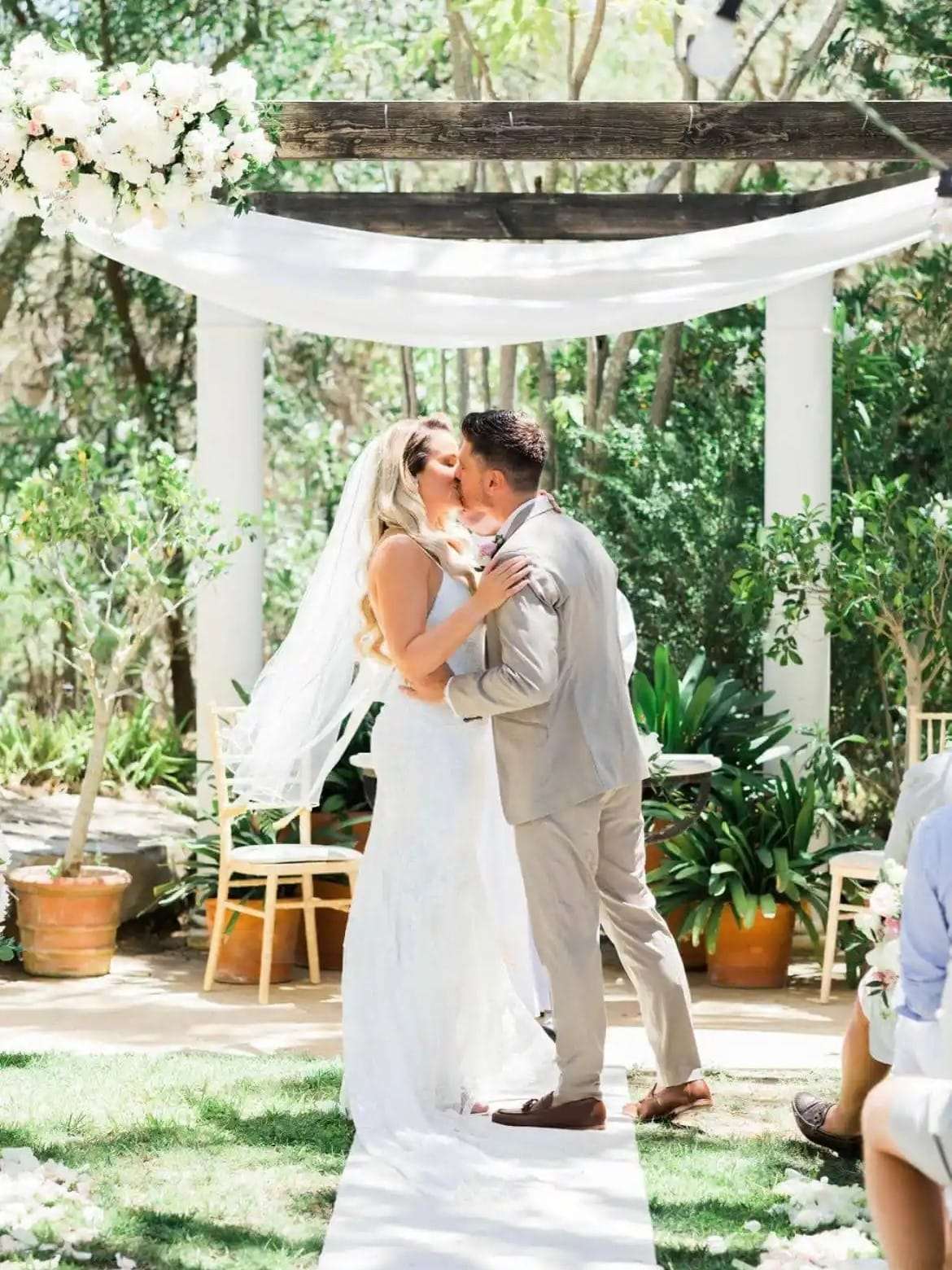The History and Symbolism of Wedding Veils Around the World
From ancient rituals to modern-day fashion, the bridal veil is one of the most iconic symbols of a wedding day — but why do brides wear veils?
In this post, we’ll uncover the fascinating history and meaning of wedding veils across cultures and eras. From their origins in ancient Rome to traditional veils in South Asian and African ceremonies, we’ll explore what the veil truly represents — and why it still holds a place in modern bridal style.
Whether you’re planning your own wedding or just curious about this enduring tradition, join us as we unveil the story behind the veil.

Why Do Brides Wear Veils?
The History and Symbolism of Wedding Veils Around the World
From ancient rituals to modern-day bridal fashion, the wedding veil remains one of the most iconic and enduring symbols of a wedding. But why do brides wear veils? What began as a protective or spiritual garment has evolved into a beautiful fashion accessory — but its deeper meaning still resonates with many brides today.
In this post, we’ll explore the origins and symbolism of the bridal veil, how it has changed over time, and the fascinating veil traditions that exist across cultures. Whether you’re choosing a veil for your big day or simply curious about its roots, let’s uncover the story behind this timeless wedding tradition.
For examples of wedding veil styles through time, check out: A Brief History Of Wedding Veils | Incredible styles from 1920s to 2020s

The Ancient Origins of Wedding Veils
Spiritual Symbolism and Early Customs
The practice of wearing veils can be traced back to ancient Rome and Greece, where veils were worn to protect brides from evil spirits. Roman brides often wore a red or flame-colored veil called a flammeum, thought to shield them from envious eyes and misfortune.
In ancient Jewish and Christian traditions, veils also symbolised modesty and reverence, marking the bride’s transition into marriage.

What Does the Wedding Veil Symbolise?
Purity, Modesty, and Family Blessings
Over centuries, veils took on deeper symbolism. In many Western cultures, they came to represent a bride’s purity, innocence, and her humility before God. In arranged marriages, veils were also used to conceal the bride’s identity until the union was sealed.
Even today, lifting the veil at the altar symbolises the transition from single life to married life — a powerful visual representation of commitment.

The Evolution of Bridal Veils Throughout History
From Face Coverings to Couture Statements
Throughout history, veil styles have evolved with the fashion of the times:
- Medieval brides wore long, opaque veils as a sign of wealth and chastity.
- Renaissance veils became more decorative, often crafted with lace and embroidery.
- Victorian brides, like Queen Victoria herself, popularised the white wedding dress and long lace veils.
- Modern brides now choose from a huge variety of veil styles — or none at all — with personal expression taking precedence over tradition.
If you’re interested in the types of veils we are asked to make for our brides today, check out: 9 Unique Wedding Veils for the Modern Bride



Why Do Brides Still Wear Veils Today?
Timeless Style with Personal Meaning
While some brides opt out of wearing veils, many still choose one to honour tradition, complete their bridal look, or symbolise the start of a new chapter. For others, a veil is simply a beautiful accessory that adds elegance and drama.
And with so many modern veil options — from bold cathedral veils to whimsical blushers — there’s something to suit every bride’s vision.

Modern Veil Styles: From Classic to Contemporary
Cathedral, Fingertip, Birdcage & More
Today’s brides can choose from a wide range of veil styles, each offering a different look:
- Cathedral veils: Long and dramatic, ideal for formal weddings
- Chapel veils: Slightly shorter than cathedral, still elegant
- Fingertip veils: Versatile and flattering for many dress styles
- Blusher veils: A shorter veil worn over the face and lifted at the altar
- Birdcage veils: Retro and chic, perfect for vintage-inspired weddings
👉 Want help choosing the right style? Read our guide:
9 Beautiful Wedding Veil Styles You Should Know About



Wedding Veil Traditions Around the World
Global Meanings and Cultural Practices
Around the world, veil traditions vary by culture and belief. Here are just a few examples:
- Middle Eastern and Islamic Weddings: Brides may wear a niqab or hijab, symbolising modesty and spirituality.
- South Asian Weddings: The dupatta or ghunghat veil is often richly embroidered and plays a ceremonial role.
- Chinese Traditions: Brides may wear a red veil (xiu he tou) for luck and happiness.
- African Cultures: Headwraps and veils, such as Nigeria’s gele, symbolise beauty, respect, and family heritage.
- European Weddings: White veils are traditional, representing purity and often including a face covering.
- These diverse traditions reflect how veils are used not just for fashion — but for deep cultural and spiritual meaning.



Famous Brides and Their Iconic Veils
From Royalty to Celebrities
Celebrity weddings often inspire veil trends. Think of:
- Meghan Markle’s cathedral-length veil embroidered with flowers representing the Commonwealth
- Princess Diana’s dramatic 24-foot train and silk veil
- Paris Hilton’s modern lace veil, later recreated for real brides
Their iconic looks continue to influence bridal style — and provide plenty of Pinterest-worthy inspiration.

Celebrity Inspired Veils We’ve Made
We’re often sent celebrity pictures as wedding veil inspo, so naturally, we’ve made a few celebrity veil dupes in our time. Here are just a few of them.






Conclusion: Why the Veil Endures
A Symbol of Tradition, Beauty, and Bridal Grace
The wedding veil has stood the test of time, adapting to each era while maintaining its symbolic roots. Whether worn to honour tradition, express faith, or enhance a bridal ensemble, the veil remains a powerful accessory for many brides.
So if you’re still asking, “Should I wear a veil?” — the answer is, if it speaks to you, absolutely.
Ready to Find Your Own Perfect Veil?
Check out our fabulous sections below!
- Plain Veils
- Lace Veils
- Beaded Veils
- Birdcage Veils
- Custom Veils
Frequently Asked Questions
Why do brides wear veils?
Brides wear veils for many reasons, ranging from ancient traditions to modern-day fashion. Historically, veils symbolised purity, modesty, and protection from evil spirits. Today, they are often worn as a meaningful and elegant finishing touch to a bridal look.
What is the origin of the wedding veil?
The tradition of the wedding veil dates back to ancient Greece and Rome, where veils were believed to shield brides from evil spirits. Over the centuries, the veil evolved into a symbol of modesty, status, and later, fashion — adapting to different cultural and religious meanings worldwide.
Do all brides have to wear a veil?
Strictly speaking, no — there’s no rule that says you must wear a veil on your wedding day. Plenty of modern brides go without. That said… we are The Wedding Veil Shop, so we might be just a tiny bit biased! Ultimately, it’s a personal choice. Whether you go full cathedral or skip the veil entirely, the only thing that matters is feeling like you.
What are some cultural variations of bridal veils?
Around the world, veils take on many different forms. In South Asia, brides may wear a dupatta or ghunghat; in Islamic cultures, a niqab or hijab; Chinese brides might wear a red xiu he tou; and in Africa, traditional headwraps like the gele are common. Each reflects its culture’s customs and symbolism.





















 No products in the basket.
No products in the basket.